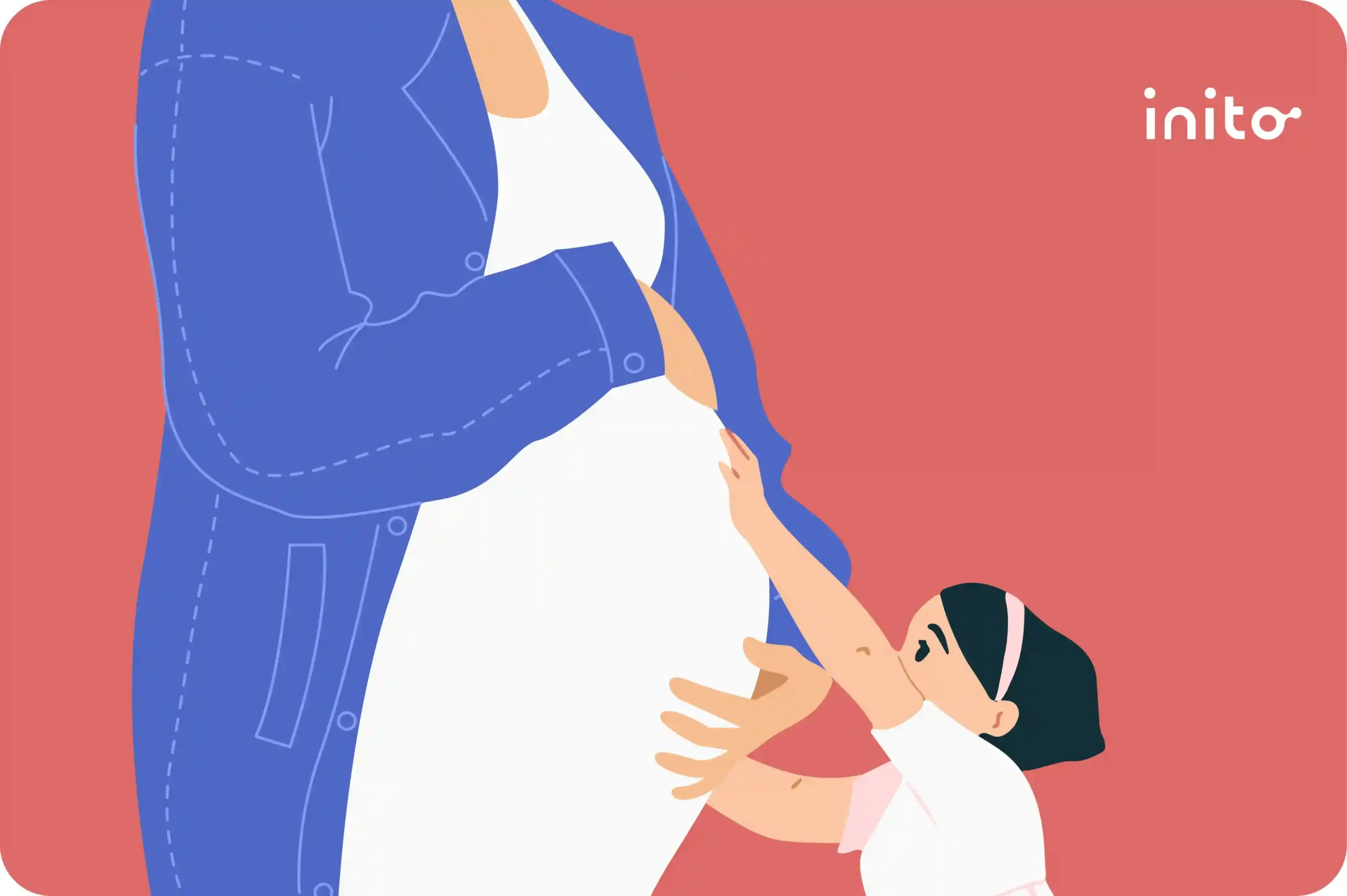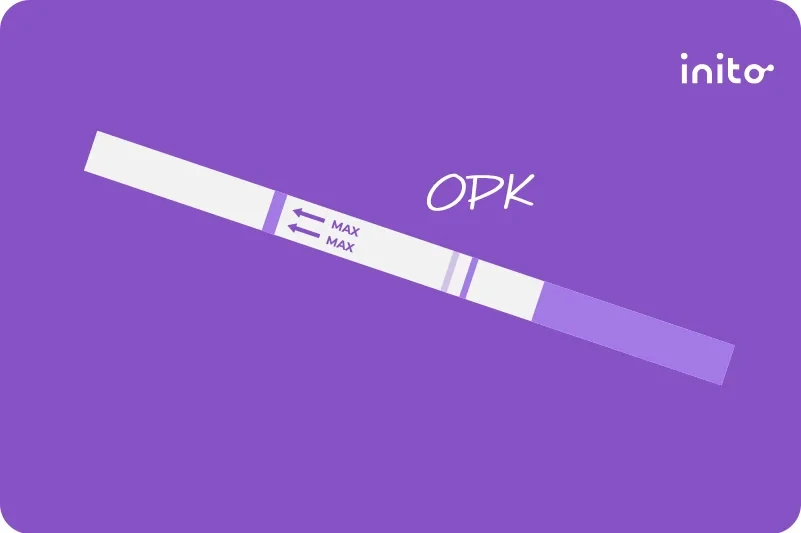Content table
Have you ever wondered about the average time to get pregnant with a second child? It’s a question that many parents find themselves asking.
The American College of Obstetricians and Gynecologists (ACOG) recommends waiting between 18 months and five years before getting pregnant a second time.
This time period between the birth of one child and the conception of the next is called the Inter-Pregnancy Interval (IPI). A longer IPI allows your body sufficient time to recover from the previous pregnancy and reduces the risk of complications with the second.
Let’s explore the factors that influence the best IPI. We’ll also look at the potential risks associated with early or late second pregnancies.
Key Takeaways
- The ideal inter-pregnancy interval (IPI) is between 18 months and five years.
- Early pregnancies can increase the risk of complications for both you and your baby.
- But getting pregnant too long after your first can also pose risks. These include preeclampsia and dystocia.
- Your overall health, the age of your children, personal preferences, and financials are all factors to consider when timing your second child.
- To help increase your chances of getting pregnant again, track your cycle, maintain a healthy lifestyle, and keep your IPI window between 18 months and five years.
- Fertility can change over time for both you and your partner. Each fertility experience is unique. Talk to a fertility specialist about your situation.
What Is the Average Time to Get Pregnant With a Second Child?
According to the CDC, 28.9% of mothers in the U.S. who have at least one child had a short IPI — one that lasted less than 18 months. This is particularly common among women over 35.
However, this average time to get pregnant with a second child may not be the case for everyone. Individual experiences can vary a lot. Some women may get pregnant again quickly, while others may take longer.
As long as your pregnancy spacing is roughly between the 18-month and 5-year mark, you are on track.
What's the Best Interval Between Pregnancies?
There’s no clear-cut answer to the ideal spacing of pregnancies. It depends on various factors, including overall health, the age of your children, financial circumstances, and personal preferences.
Here’s what the ACOG recommends:
- Less than 6 months: This is not recommended — it can increase the risk of complications for you and your baby.
- 6-18 months: This is a better waiting time, but still may put you at risk. This is especially true if you had any challenges with your first pregnancy.
- 18 months – 5 years: This is the ideal IPI. It gives your body enough time to recover and reduces the risk of complications.
- More than 5 years: It is possible to get pregnant with this longer IPI. But it can bring with it an increased risk of complications such as preeclampsia.
What Are the Risks of an Early Second Pregnancy?
Research shows a higher chance of complications when pregnancy spacing is less than 18 months. The most significant risk factor is not giving your body enough time to recover from the first baby before diving into the subsequent pregnancy.
When your body hasn’t fully recovered from baby #1, it can be harder to support baby #2.
This lack of recovery can lead to the following issues:
- Nutritional deficiencies: Your body may not have had enough time to replenish essential nutrients needed for a healthy pregnancy.
- Breastfeeding challenges: Being pregnant and breastfeeding at the same time can make it hard to produce enough milk for your first baby.
- Incomplete healing: If you had a C-section, your uterus may not have fully healed from giving birth. This can increase the risk of challenges for your next pregnancy.
- Blood vessel problems: Your blood vessels may not have had time to heal completely, which can cause abnormalities during the next pregnancy and delivery.
The above can lead to pregnancy complications, including
- Premature rupture of membranes: This happens when your water breaks too early.
- Uteroplacental bleeding disorders: This includes problems with bleeding from the placenta, such as the placenta detaching (abruptio placentae) or a low-lying placenta (placenta previa).
- Postpartum hemorrhage: You may experience excessive bleeding after a vaginal birth.
- Preeclampsia: This pregnancy complication involves high blood pressure and can also damage your internal organs.
- Uterine rupture: This is even more likely for women who previously had a C-section and are trying for a successful vaginal delivery with a short IPI.
A lack of recovery time can also result in issues for your baby, such as:
- Premature birth: Your baby may be born too early, which can lead to health challenges such as immature lungs, heart issues, decreased immunity, and other complications.
- Low birth weight: Your baby may be smaller than expected when born. This can also present health issues like a higher risk of infections, jaundice, breathing issues, low blood sugar, and chronic problems later on in life.
- Small for gestational age: Your baby may weigh less than the 10th percentile for babies of the same age. This can lead to breathing complications, low blood sugar levels, jaundice, etc.
One study found that women with a short IPI of less than 18 months were more likely to have complications and found that:
- 5.5% of women with short IPIs delivered preterm
- 27% delivered early-term
- 6% had babies that were small for gestational age
By waiting at least 18 months between pregnancies, you significantly reduce these risks and set yourself up for a healthy second pregnancy.
What Are the Risks of a Late Second Pregnancy?
Most of the focus is on the potential risks of a short inter-pregnancy interval. But the truth is that long intervals pose their own set of challenges.
Research suggests that waiting more than 5-10 years to have your next baby may increase the risk of unwanted outcomes.
One such risk is a higher chance of developing preeclampsia and dystocia in your second pregnancy. This is due to physiological regression. A woman’s body is prepped for fetal growth during pregnancy, and these changes decline post-delivery.
If you don’t get pregnant within 18 months to five years, you may lose your childbearing abilities. This means that your body may function more like a woman who has never given birth (nulliparous).
Research shows that women with long IPIs have similar rates of preeclampsia to nulliparous women. This suggests that the protection gained from a prior pregnancy can be lost over time. Also, women with long IPIs may be at a higher risk of dystocia, which is a difficult or obstructed labor.
It’s important to consider these risks when planning your pregnancy. Always discuss your unique circumstances with your healthcare provider. You may have reasons for a longer IPI, but it’s important to understand the risks. This can help you make informed decisions.
Tips for Timing Your Second Pregnancy
Timing your second pregnancy correctly is essential. Here are tips to increase your chances of a successful second-time pregnancy.
Time it right
It’s essential to give your body enough time to recover from the previous pregnancy. This ensures your body is healthy and ready for baby number two.
But be sure not to wait too long. The best IPI is between 18 months and five years.
Track your cycles
Following childbirth, you may not know when you’re ovulating again. This is where the Inito Fertility Monitor can help!
Inito helps you track your cycles and measures all four sex hormones: LH, estrogen, PdG (urine metabolite of progesterone), and FSH. It does this on a single test strip to identify your fertile window and confirm whether you’re ovulating again. This can help you plan your next pregnancy accordingly.
Lead a healthy life
Maintain a healthy lifestyle to improve your chances of conception. This includes a balanced diet, regular physical activity, sufficient sleep, stable mental health, and effective stress management.
Is It Easier to Get Pregnant With a Second Child?
No.
You may assume it’s easier to get pregnant a second time, but this isn’t always the case. The data is mixed. Some women find it easier, while others may face secondary infertility.
One study shows that 11% of couples in the U.S. face challenges with secondary infertility. Some of the causes of this infertility can overlap with those of primary infertility.
Additionally, both you and your partner’s fertility can change over time.
For couples who had a previous child through medical assistance (i.e. IVF), the chances of getting pregnant naturally with the next child are about 17%.
Learn more: Secondary infertility
If you’re having trouble getting pregnant a second time, it’s essential to talk to your fertility doctor. They can help you identify the underlying cause and suggest appropriate treatment options.

FAQs
The time between baby number one and baby number two varies from couple to couple. For some, it happens easily. But for many, it can take longer to conceive again.
The best way to increase your chances of getting pregnant again includes timing it right, tracking your cycles, and leading a healthy lifestyle.
The average time between pregnancies for a second baby is between 18 months and five years.
Not necessarily. The timing of the second child depends on a number of factors such as the general health of the mother, the baby’s position in the uterus, whether there are any complications, and so on.
For most people, it typically takes a year or less to get pregnant without intervention. One study found that 75% of couples are able to conceive in 6 months, and 90% of couples are able to conceive within 12 months.
Yes, it can be normal to not get pregnant after 4 months. The standard marker is that most healthy couples (nearly 90%) are able to get pregnant within about one year of trying.
Yes, it is completely normal not to get pregnant after only one month of trying. In fact, only about 30% of couples conceive the first cycle that they try for a baby. If you reach a point where a full year of actively TTC has passed, then you may want to consult a doctor or specialist.
For those 30 years and below, there’s a 85% of conceiving within a year. However, there are a lot of factors that go into fertility. So not getting pregnant within one year doesn’t always mean there’s an issue, but it may be something you want to bring up to your doctor at that point if you have concerns.
No, stress on its own can not cause you to get pregnant. That said, when you have higher-than-normal levels of stress, it can throw your hormones off balance. And hormonal imbalances can interfere with your menstrual cycle. So if your stress causes your cycle to become more irregular (like having delayed ovulation), then it could lead to inaccuracies with tracking your cycle for conception.
About 30% of healthy couples are able to get pregnant within their first cycle of trying. But if you don’t get pregnant within the first 1 – 3 months of TTC, don’t despair. By the 6-month mark, that percentage shoots up to 75%. Within 12 months, your chances grow to 90%. These statistics are general guidelines, though. Keep in mind that your exact chances depend on a variety of factors like age, overall health, and medical conditions.
There are a few factors that you can expect to increase your chances of pregnancy. Some of these factors include:
- Having sex during your most fertile days
- Being younger in age
- Engaging in healthy lifestyle habits like regular exercise, a nutritious diet, and quality sleep
- Having no known health conditions
- Having a healthy BMI (not underweight or overweight)
Based on one study of IVF patients, on the day the trigger shot was given, follicles between 12 – 19 mm led to the best chance of reaching ideal maturity for getting pregnant.
Here’s a look at how your age may affect your chances of getting pregnant within one year:
- Younger than 30: 85%
- 30 years old: 75%
- 35 years old: 66%
- 40 years old: 44%
Was this article helpful?
- Interpregnancy Care | ACOG
- Short Interpregnancy Intervals in 2014: Differences by Maternal Demographic Characteristics | NCHS
- Gestational Hypertension and Preeclampsia | ACOG
- The risk of perinatal mortality following short inter-pregnancy intervals—insights from 692 402 pregnancies in 113 Demographic and Health Surveys from 46 countries: a population-based analysis | The Lancet
- Effects of Birth Spacing on Maternal, Perinatal, Infant, and Child Health: A Systematic Review of Causal Mechanisms | Wiley
- Interpregnancy Interval and Birth Outcomes: A Propensity Matching Study in the California Population | PubMed
- Secondary infertility and the aging male, overview | PubMed Central












